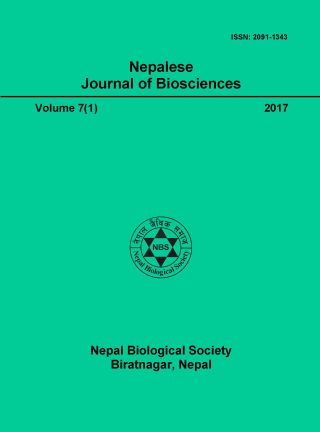Estimating the population density of the Himalayan Rangeland weed Swertia ciliata (G. Don) Burtt.: An impact of topography and disturbance
DOI:
https://doi.org/10.3126/njbs.v7i1.41756Keywords:
Gupha Pokhari, Tinjure-Milke-Jaljale, Weed populationAbstract
Swertia ciliata (G. Don) Burtt. is one of the most problematic weeds in the Himalayan rangelands. The main objective of this work is to assess the magnitude of S. ciliata invasion and analyze the impact of topographic factors and the disturbances on the distribution and population density. The work was conducted during August and September 2012 in the Tinjure-Milke mountain ridge at Gupha Pokhari, Nepal. The rangeland aspects (east, south and west) were considered the first level factor; and slopes (≤45 degree and ≥45 degree inclination) and the disturbance intensity were the second and third factors, respectively. Line transects made up 4 m2, 74 quadrats were laid down randomly to enumerate the weed population. The average population density of the S. ciliata was 127 plants m-2. The population density was found significantly different by the effects of the disturbances as well as aspects whereas the effect of the two slopes was found insignificant to the population density. A space is left for further research by ecological and edaphic factors. The study reveals that the infestation degree of S. ciliata is at a considerable level in the Himalayan rangeland and needs immediate control measures.




